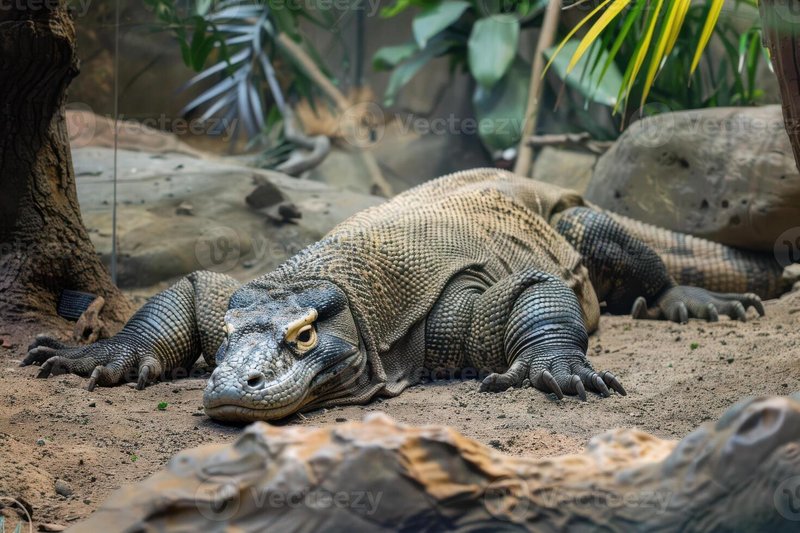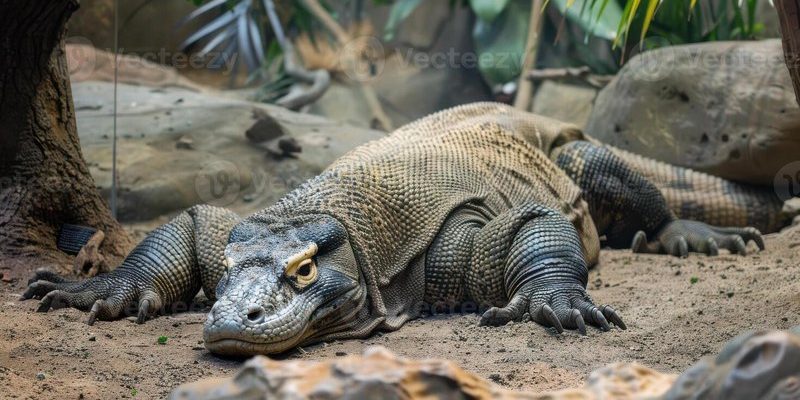
The Komodo dragon is the world’s largest lizard, growing up to 10 feet long and weighing around 150 pounds. Found only on a few Indonesian islands, these creatures have a fascinating mix of traits that make them both enchanting and, at times, intimidating. Here’s the thing: while they have a reputation for being aggressive, understanding their behavior and environment is key to grasping the real risk they present to humans.
Understanding Komodo Dragon Behavior
Komodo dragons are often seen as solitary creatures. They tend to roam their territory in search of food. Though they can be aggressive, they usually prefer to avoid humans. Think of them as the introverted giants of the reptile world. They typically hunt deer, wild boar, and smaller animals rather than seeking out human encounters.
That said, their behavior can change when they feel threatened or if food is involved. It’s important to remember that just like any wild animal, they act on instinct. When you enter their territory, it’s like walking into a bear’s den—precaution is essential. Staying calm and respecting their space is crucial.
Defensive and Aggressive Behaviors
When it comes to their defensive mechanisms, Komodo dragons employ several strategies. They are known to hiss loudly, puff themselves up, and even strike if they perceive a threat. This can come off as aggressive behavior, particularly if someone stumbles upon them unexpectedly.
In their natural habitat, they can also exhibit signs of aggression when competing for food. If they’re in a feeding frenzy, there’s a chance that they might lash out at anything that comes too close. This is a prime example of how their environment can dictate their behavior—which is essential to consider if you’re ever in their territory.
Potential Risks to Humans
You might be wondering, “How often do these incidents happen?” Attacks on humans are rare, but they do occur, often tied to specific situations. Most incidents happen when people venture too close, like park rangers or tourists who don’t follow guidelines.
These lizards have strong jaws and sharp teeth, much like a crocodile, and their bite can lead to severe injuries. Plus, they have venomous saliva that can cause big problems. While human fatalities are rare, the risk isn’t zero. So, it’s best to approach these magnificent animals with respect and caution.
Past Incidents and Encounters
There have been documented attacks on humans, particularly in areas where locals live close to Komodo habitats. For example, a few years ago, a tourist was bitten while trying to take a close-up photograph. This just shows that while they’re fascinating, getting too close can lead to serious outcomes.
In the wild, young Komodo dragons may also come down from trees to evade larger dragons, but it’s not uncommon for them to encounter humans during this process. The important takeaway here is that unexpected encounters can be dangerous if precautions aren’t taken.
How to Stay Safe Around Komodo Dragons
If you’re planning a trip to see these incredible creatures, knowing how to stay safe is vital. Here are some tips to keep in mind:
- Always follow local guidelines and instructions from guides.
- Maintain a safe distance—at least 10 feet is generally recommended.
- Keep your food secured; they have a strong sense of smell and might be drawn to it.
- Stay calm—avoid sudden movements, which could trigger a defensive response.
Understanding their territory helps too. They usually dwell in dry savannas and tropical forests, so being aware of where you’re stepping can prevent surprise encounters.
The Role of Guides and Conservation Efforts
When visiting areas inhabited by Komodo dragons, hiring a guide can boost safety and enhance your experience. Guides know the behavior patterns of these reptiles and can help you maintain a safe distance while still enjoying the encounter. This partnership ensures that you see these amazing animals up close without putting yourself at risk.
Moreover, conservation efforts are crucial. The Komodo dragon is a protected species, and understanding how they fit into their ecosystems is essential for maintaining biodiversity. By respecting their habitat, you’re playing a part in their preservation.
In summary, while Komodo dragons can be dangerous to humans, most encounters do not result in harm if people approach them with respect and knowledge. They are wild creatures and should be treated as such. By understanding their behavior, following safety guidelines, and appreciating them from a distance, you can enjoy the wonder of these ancient reptiles without falling prey to unnecessary risks.
So, whether you’re planning a trip to Indonesia or just curious about these incredible lizards, keep this information in mind. The Komodo dragon is a fascinating part of our planet’s wildlife, and encountering one can be an unforgettable experience—just remember to stay safe!

